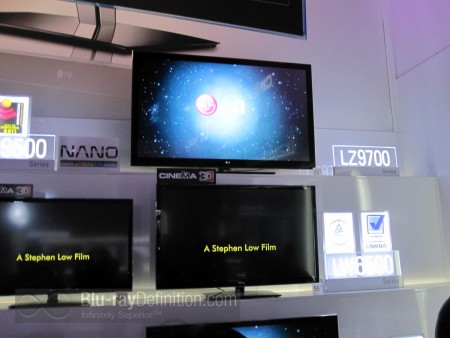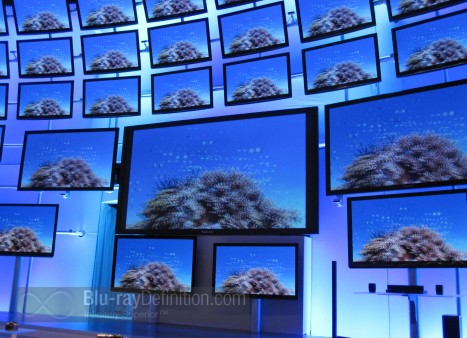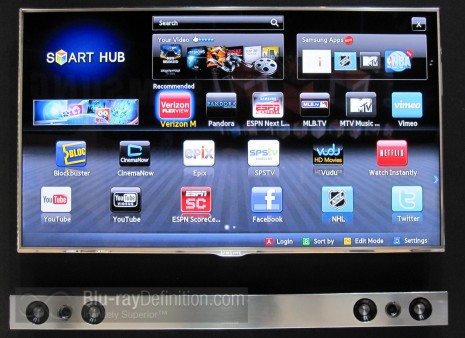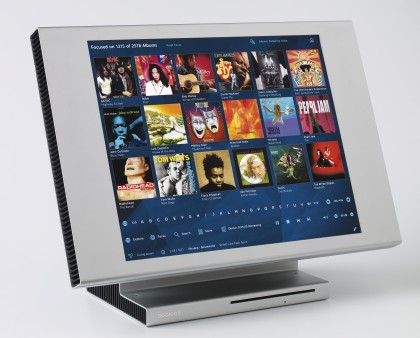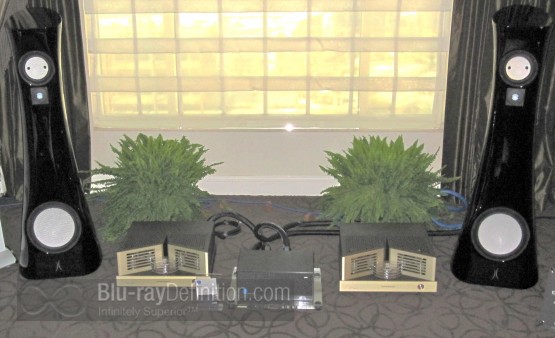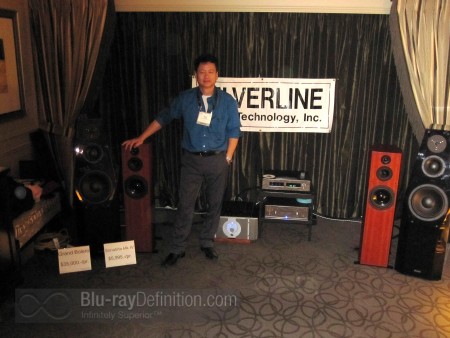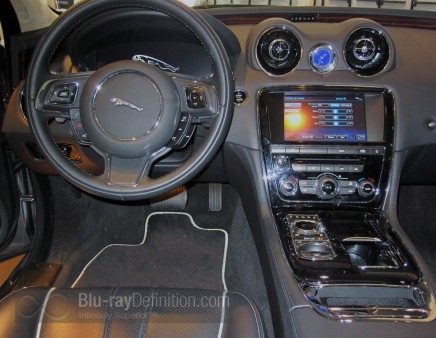The International Consumer Electronics Show is the year’s most anticipated multi-media event , and judging from the nearly 130,000 attendees, including 30,000 international visitors, this year’s CES was no exception. The venues, spread throughout the Las Vegas Convention Center and neighboring hotels, offered a vast array of gadgets and gizmos, as well as current and future high end audio and video gear. Covering the entire show is the 21st century equivalent of the labors of Hercules, given the distances to cross, the crowds to negotiate, and the sensory overload from 2700 corporate exhibitors. Not possessing Olympic strength and endurance, here are some selected notes and highlights of the 2011 convention experience.
Video
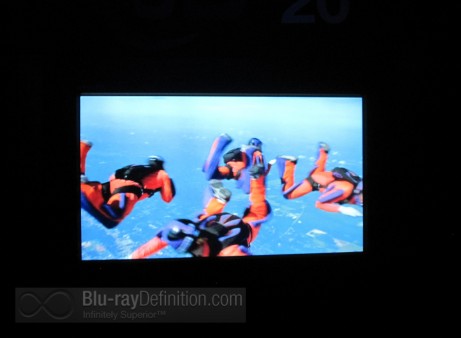
Since last year, the video world has been all agog over 3-D video displays and Blu-ray players. While these devices were ubiquitous this year, the buzz centered on Toshiba’s “glasses free” 3-D Displays in sizes from 12” to 65.” Don’t get too excited yet, some of the finished products won’t be available until much later this year. If Toshiba’s new sets succeed, then active shutter glasses eventually may be on their way out. And not a moment too soon for those of us who wear corrective eyewear, find these goggles uncomfortable or are bugged by the frequent replacement or recharging of their batteries. I ran the viewing gamut starting with Toshiba’s big boys and finishing with their smaller computer-sized screens. The 3-D effectiveness of simultaneously merging multiple (9) images is inversely proportional to screen size. This means that, on the larger screens, viewing just slightly off axis gives a distorted picture similar to that seen without wearing 3-D glasses. When the screen size shrinks to the PC level (12 to 20 inches), the 3-D processing is much more seamless and closer to the pictures of glasses-based sets.
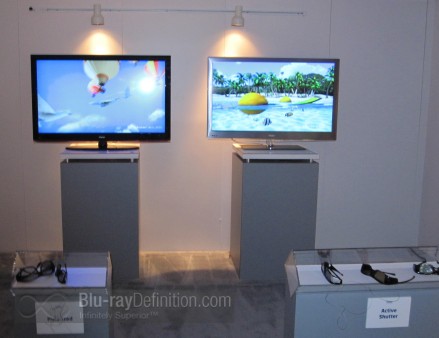
Not to be outdone, LG Electronics, offers a line of 3-D sets featuring “flicker free” screens that can be viewed with the passive eyewear similar to that used in movie theaters. This resolves the issues of battery replacement or charging and seems to be a reasonable stop-gap measure until the glasses-free technology is perfected for the larger displays. The LW6500 Cinema 3D TV had a very convincing 3-D image and the glasses were lighter and much more comfortable than their battery-powered peers.
(Editor’s Note: While the “flicker-free” polarized or passive 3D option offers a cheaper and more lightweight alternative to the active shutter sets and glasses, they also only offer half the resolution in 3D mode, meaning they are not really “Full HD 3D,” but may be the 3D equivalent of cheap 720p displays versus high-end 1080p displays.)
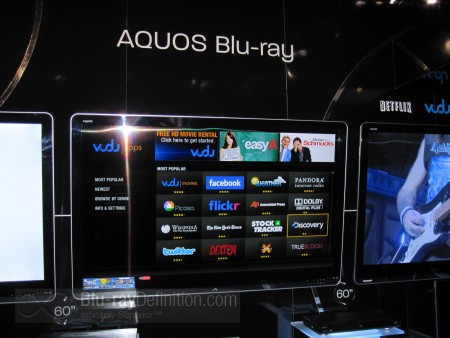
Sharp featured its eye-catching 70” Quattron 3D TV, the LE935 which gets this company well into the 3-D arena. If that’s too big for your room or wallet (price to be determined but definitely not cheap), there are more conventional 42” to 60 ” screens. The Quattron series enhances the RGB color scale by adding a “Y” or yellow component. Picture quality and apparent resolution were quite good considering the screen size of the flagship set. However, the added benefit of yellow was hard to assess against competing models at the other exhibits.
Sony showed off its new 3-D LED line, led by the Bravia XBR-HX 929 models ranging in size from 65” to 46.” I did not have last year’s models for comparison but the pictures in both standard HD and 3-D were typical of Sony’s high standards for color, sharpness, and good black levels. Off-axis viewing also seemed to be excellent, as was the case for some of the other manufacturers’ LED/LCD offerings, suggesting that this alleged weakness for non-plasma displays is gradually dissipating.
Ultra-slim and nearly bezel-less 3D LEDs were features of the 2011 Samsung line-up. The top of the roster LED 8000 series looked like a nearly free-floating screen and with its standard active shutter glasses, provided outstanding picture quality. When viewed sideways, there is almost no TV there, reminding me a little of the 1960’s fashion icon, Twiggy.
But the big kahuna was Panasonic’s Ultra HD 152” 3-D Professional Plasma display. During a 12-minute presentation, it was flanked by its smaller siblings, coming in at 103” and 85,” respectively. The 4K by 2K resolution yielded an amazing picture and quite convincing 3-D effects when called upon. While the price tag, roughly $400,000, may a little rich for your blood, I imagine that the technologic advances of the higher rez display will trickle down into some pretty amazing more home-sized home units.
Virtually all of the major manufacturers paid homage to the increasing need for interconnectivity of TV and streaming internet content. Many, notably Sharp and Toshiba, included menus containing free streaming apps, Yahoo, MSN, etc, as well as subscription services such as iTunes, Amazon, Netflix and Vudu. Vudu is becoming, for many, a preferred means of watching HD content with true surround sound when available.
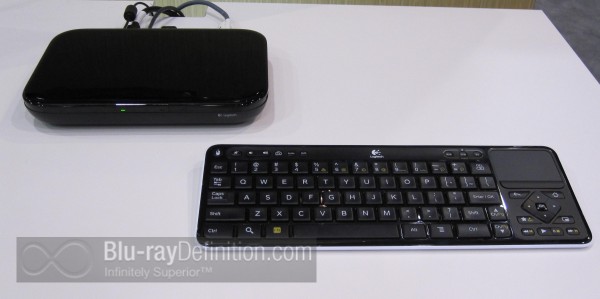
The interconnectivity trend is exemplified by a new add-on product, the Logitech Revue. Powered by the Google Chrome search engine (“Google TV”), this relatively inexpensive device has an outboard box that mates with your cable/satellite receiver box and HD display. Its computer DNA is reflected by a full-sized wireless keyboard for entering selections and remote control functions. The Revue accesses programming from all available sources in your home, including stored selections on your PC, the ‘net, and cable or satellite broadcasts. Typing in a search term will retrieve all relevant available sources from which you can pick and choose. Current and future apps for your TV, including streaming services, can be included as well. I expect that other manufacturers will jump on this bandwagon with their own branded remote search devices.
3-D Blu-ray players were everywhere and contained an increasing number of features which, like the displays, offered Wi-Fi connectivity and media server capability in their own right. A good example of this was the LG BD 690. This player has LG SmartTV functionality and a 250 GB hard drive, enough to store about 50 standard DVDs but only 10 Blu-Ray discs. The beat continues with Panasonic’s line up of Blu-ray players (DMP-BDT310/210/110) which are VieraCast-enabled and allow users with appropriate cameras to make Skype voice and video-calling on an HDTV. These players received Best in Show awards and delivered outstanding pictures to their Panny displays. Sony’s BDP-S780 flagship offers a full range of video services, including Netflix, VUDU , Hulu, Pandora, Slacker, BD-Live, Bonus View and so on. Sharp’s 3 BD offerings have similar featured offerings.
Audio
Music Servers
Most of the higher end audio equipment was exhibited at the Venetian and Flamingo hotels, the latter being designated as the home for “T.H.E. Show.” In visiting over 100 suites and small halls, there are several industry trends worth noting. First and foremost, the writing on the wall for future music playback is becoming easier to read: digital servers that store and access high resolution downloads. Meridian Sooloos introduced their two most recent devices which take different directions. The Control 15 has a large touchscreen and an onboard 500 gigabyte hard-drive; the Media Core 200 is a free-standing 500 gig hard-drive, less the display, that can be operated by a PC or Mac with Control software or iPad/iPhone Sooloos apps. Either of these devices will store about 1000 CDs which should satisfy the vast majority of music lovers.
Olive Media’s Oliver Bergmann showed me their newest flagship music server, the Olive 06HD. This is a no-holds barred unit featuring top-of-the-line Texas Instruments chips, completely isolated disc drives, power supplies, digital input and analog/digital outputs. Its touchscreen is 10” across and images also can be sent to a large screen through its HDMI output. The 06HD will store about 6000 CDs, handles resolutions up to 200 kHz-24 bit, can play or rip CDs and has an independent headphone amplifier/jack. In short, it looks like the proverbial “Swiss Army Knife” component that could serve as the foundation for an outstanding home music system.
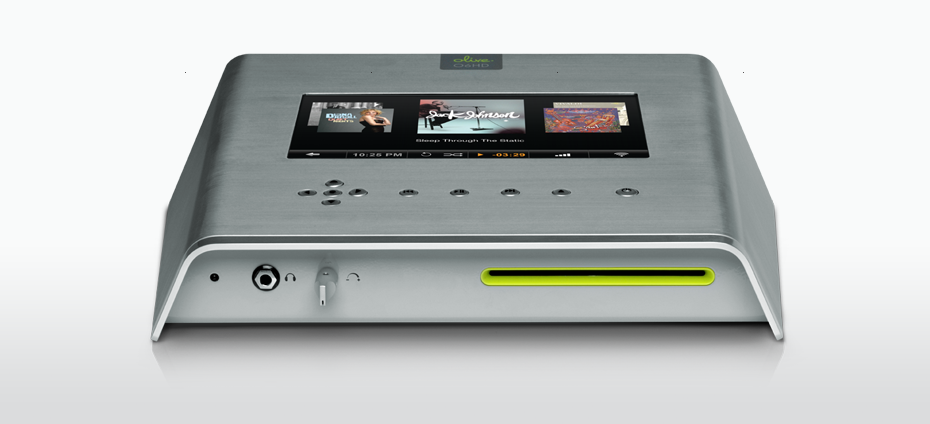
A completely different tack is being taken by Bryston BDP-1 Digital Player. Unlike all-in-one units which combine screens, DACs, soundcards, CD ripper-players, and operating systems, this low profile unit will access high-resolution files from a thumb drive or hard drive through a USB port device. The BDP-1 which resembles Bryston’s BDA-1 DAC is a digital “grand central station” that can route files with sample rates and word lengths up to 192kHz-24 bit to an external DAC. While music files must still be downloaded to a computer, once stored, they are readily recognized and played by the BDP-1 without need for an internet connection. The BDP-1 can be controlled by its front panel, a basic Bryston remote or an internet iPad/iPhone app.
Digital Playback Equipment.
Not too many new transports or DACs hit the runway this year, not surprising when considering the foregoing developments. I got a gander at the Conrad-Johnson’s relatively compact solid-state DAC which translated some outstanding hi-rez material ported by a fairly simple Shuttle Touch Screen and hard-drive to their top tube electronics and the new Estelon loudspeakers. Another highly anticipated new product was Teac Esoteric’s K-01 single box CD/SACD player, featuring an updated VRDS-NEO drive mechanism, and dual 32-bit mono DACs. This entry builds on Esoteric’s intervening products and DAC developments. Mark Gurvey and Tim Crable treated me to an extended comparison between this unit and an excellent analog front end (anchored by their C-03 preamp, E-0 phono preamp and A-03 amplifier into MG-10 loudspeakers). This demonstration showed a continued narrowing of the digital-analog sonic gap.
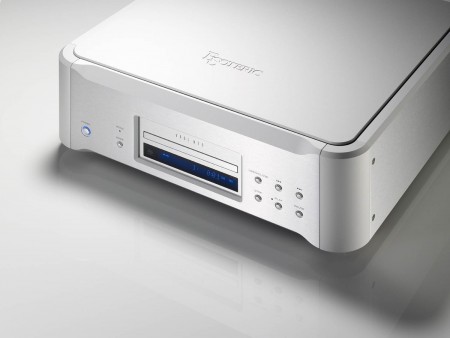
Front End Electronics
Most of the well-known brands in amplifiers and preamplifiers were holding forth as independent exhibits or in conjunction with other source components or transducers. Audio Research Corporation’s $25K 2-box 40th Anniversary Edition Reference Preamplifier held court in an appropriately regal salon that featured ARC’s 610T monoblocs driving the top-of-the heap Sonus Faber Fenice loudspeakers. Pass Labs greeted me with their XA-series monoliths in the parlor and then, Wayne Colburn showed me a prototype 2-box amplifier with revised front panel cosmetics and separate box. As these were only mock-ups, I can’t tell you how good they sounded but when these guys go into production, a new chapter in the Pass Labs saga may well be written.
The Soulution amplifiers and preamplifiers live somewhere over the rainbow of high end equipment. Their substantial cost of ownership (more than $100k for the amps alone), place these Swiss beauties beyond the reach of most mortals. However, the 710 Stereo amplifier with its 720 companion preamplifier were superb partners for a brace of Magico Q5 loudspeakers.
Time and space preclude detailed descriptions of the other fine pieces of equipment that I heard, and, there were many, including tubes from veteran companies Conrad-Johnson, WAVAC, and McIntosh, and an up and coming company Qualia Japan whose sweet little glass-enclosed 40-watt SET monoblocs coupled beautifully with Sonics Allegra speakers. There was no shortage of excellent solid-state equipment, and I had a chance to hear excellent sound from the usual suspects such as Edge Electronics, Krell, Plinius, Perreaux, and the exquisite Burmeister.
Although there were no breakthrough products in Class D amplifiers this year, I was impressed with the musicality of this compact alternative as exemplified by the Bel Canto Design new integrated amplifier, the C5i which offers 5 digital inputs (including USB) and 2 analog inputs (including an MM phono stage).
Analog
Many of the high-end rooms continue to use vinyl to show off their systems, Clearaudio, VPI, Colibri, and Transrotor, to name a few. This is an encouraging trend for those of us who love this medium since it shows a considerable number of audio companies are “keeping the faith.” However, the most interesting analog-related product that I saw was the Audio Desk Systeme’s Vinyl Cleaner, distributed in the US by Ultra Systems. This sturdy upright device immerses a record (sparing the label) in a bath of cleaning solution and surrounds it by 4 rotors (which look like brushes but do not actually touch the vinyl). After a few minutes’ rotation, the fluid is drained away and the ultrasonic drying cycle is completed. Robert Stein took me through Vinyl Cleaner’s idiot-proof operation a couple of times. I am looking forward to getting my hands on one of these babies very soon.
Speakers
In the sound reproduction chain, for most of us, speakers are where the rubber meets the road. There were speakers a plenty in all sizes, shapes, designs, and price ranges. In the stratospheric price range were the de-lovely Sonus Faber Fenice’s, weighing in at 305kg (each!) and more than $300K (US) per pair. In the large demo salon, and they do need a big room, the sound picture was huge and vivid but hampered by some room effects. I am certain that better sound will prevail in a well-tempered audio chateau or villa. Don’t worry about rushing out to buy the Fenices-all 30 pairs have been sold.
Another speaker that caught my attention was the black-beauty Estelon (about $40K for the pair) which I heard with C-J (tube) and Burmeister (solid state). The Estelons have a ceramic tweeter and sounded superb in either setting with plenty of air. The handsome black cabinet and curvaceous contours certainly will appeal to audiophiles and interior designers alike.
Moving in a different direction, I spent some good listening time with Alan Yun and his Silverline Audio speakers, ranging from the minute Minuets (7.5 lbs each and $600 a pair)to the big daddy Grand Boleros at $36k a pair. These units were handsomely finished and offered excellent sound for the money.
Nearing the end of my speaker odyssey, I returned to the Flamingo to hear two very different speakers-the new Magnepan Magneplanar MG 3.7 and the Sanderssoundsystem Model 10c’s. The former is a new arrival and Maggie’s second full range ribbon system following in the footsteps of last year’s MG 1.7. Superficially, it resembles the 3.6R (its predecessor), although the show model had bright red surrounds. Sonically, it imaged like a bandit and conveyed excellent instrumental warmth on a Mercury XRCD reissue of Henryk Szeryng playing Kreisler’s Caprice Viennoise. At $5500 a pair, it faces stiff competition but with the right electronics (I heard it with ARC and Bryston) and room placement, it is, in the Magnepan tradition, a good value.
Roger Sanders, one of the godfathers of ESL technology, has pursued the holy grail of electrostatic sound for more than 3 decades. The Sanderssound 10c ($13k) includes two ESL panels with dynamic transmission line woofers, an adjustable DSP crossover, and 500 watt/side solid-state amplifier. These speakers conveyed a near-seamless recreation of everything that came their way, with a superb albeit small sweet-spot, and amazing dynamics. Another best buy, in my opinion.
I trucked back to the Venetian to get a listen to the Magico Q3’s, a smaller version of their highly regarded Q5’s which I had heard previously. These speakers share tweeter and midrange with their bigger brothers and asmaller trio of 7” woofers The improved sensitivity (90db) allows them to be driven by smaller amplifiers, although I heard them in a no-holds-barred session with a top-flight Soulution system. Cutting to the chase, this was, in many ways, as good as current sound gets. The Q3’s musicality just shined on Vivaldi’s Stabat Mater. For $34k, prospective buyers will get about 90% of what the $60k+ Q5’s provide.
Other Categories
I had a good time listening to the debut of Denon’s AirPlay. This system takes advantage of iTunes library connectivity and carries music streaming to all enabled Denon equipment, in this case, the N7 Networked System including the RCD-N7 Receiver, SC-N7 stereo speakers, and the AVR-4311 A/V surround receiver. The cool thing here is that you can control this feature without a computer and stream music stored on mobile devices (iPads, iPhones, iTouches) through Wi-Fi networks. I watched this system in action and it not only works as advertised but is extremely user friendly.
Guilty Pleasures
I had nearly made it out of the Las Vegas Convention Center on the last day of the show unscathed, and then, and then, uh-oh, along came the Jaguar XJL and the mighty Bowers & Wilkins 20-speaker 7.1 channel sound system. Did I forget to mention that the Jag was drop-dead gorgeous? Once, seated in the cockpit with the system engaged, I wondered how many traffic tickets I would get or how many pedestrians and cyclists I would endanger while totally absorbed in such superb surround sound. Given the extra leg room of the “L” series, I would probably just hire a driver, sit back, and relax. The $90k price tag may seem a little off-putting but audiophiles who must drive for a living could probably find a business expense write-off to justify the purchase of this terrific sound system with an elegant sports sedan thrown into the deal.
Wait’ll Next Year
Based on my 2011 show experience, it looks like the home video and audio industry is finally recovering from the doldrums of the past couple of years. Given the interdependency of the domestic and global economies with the research/development and sales of luxury goods, I hope that this trend continues. If the proliferation of high end items in all categories are any indication, cautious optimism would suggest that FY2011 will be a very good year.


